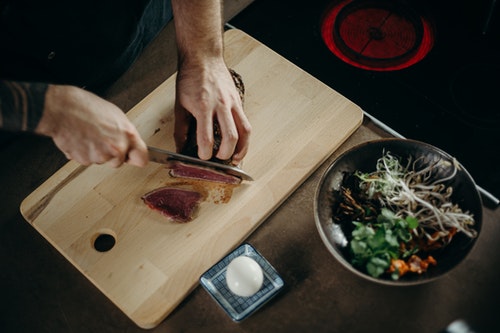A broken knife blade can be a real hassle, especially if you rely on it for your culinary adventures. In this comprehensive guide, we will walk you through several methods on how to fix a broken knife blade using simple techniques and readily available materials. Let’s dive straight into it and get your favorite knife back to its prime condition.

The Importance of a Well-Maintained Knife
Before we get into the steps to fix a broken knife blade, it’s crucial to understand why keeping your knife in good shape is important. A well-maintained knife not only makes your cooking experience more efficient but also ensures safety in the kitchen. Investing time to repair your knife reflects the importance you place on quality kitchen tools.

Understanding the Break
Not all knife breaks are created equal. Some breaks are minor and can be fixed with a bit of patience and effort, while others might require professional help. Identifying the type of break is the first step towards effectively fixing your knife blade.
Types of Breaks
- Minor Chips: These are small nicks on the blade edge that can often be fixed by sharpening.
- Major Chips: Larger chips might require grinding the blade down to remove the damaged part before sharpening.
- Complete Breaks: When the blade snaps into two or more pieces, it generally requires more intensive repair methods or even a replacement.

Tools You Will Need
Gathering the right tools beforehand will make the repair process smoother. Here are some tools commonly used in knife blade repairs:
- Sharpening Stone: Essential for smoothing out minor chips.
- Grinder: Handy for dealing with larger breaks and reshaping the blade.
- Epoxy Glue: Useful for reattaching broken pieces.
- Clamps: Necessary for holding the blade in place while the glue sets.

Fixing Minor Chips
For minor chips, you can often fix the blade by sharpening it.
Step-by-Step Guide:
- First, place your knife on the sharpening stone at the correct angle.
- Using smooth strokes, move the blade back and forth on the stone.
- Continue until the chip is no longer visible and the blade edge is straight.
Fixing Major Chips
For larger chips, you may need to grind down the blade.
Step-by-Step Guide:
- Use a grinder to remove the jagged edges around the chip.
- Reshape the blade to ensure an even edge.
- Sharpen the blade to restore its cutting ability.
Fixing Complete Breaks
Repairing a blade that has snapped completely is more complex but not impossible.
Step-by-Step Guide:
- Clean both broken pieces thoroughly to ensure a strong bond.
- Apply a strong epoxy glue to the break points.
- Join the pieces together and use clamps to hold them in place.
- Let the glue set for at least 24 hours.
- Once set, grind and sharpen the blade to restore its edge.
FAQ
Can I fix a broken knife blade at home?
Yes, with the right tools and patience, you can fix most minor and some major breaks at home.
What kind of glue is best for fixing a broken knife blade?
Epoxy glue is highly recommended for its strong bonding capabilities.
How long does it take to fix a broken knife blade?
Minor repairs can be done in a few hours, while major repairs might take up to 24-48 hours, especially if glue is involved.
As an Amazon Associate, I earn from qualifying purchases.


